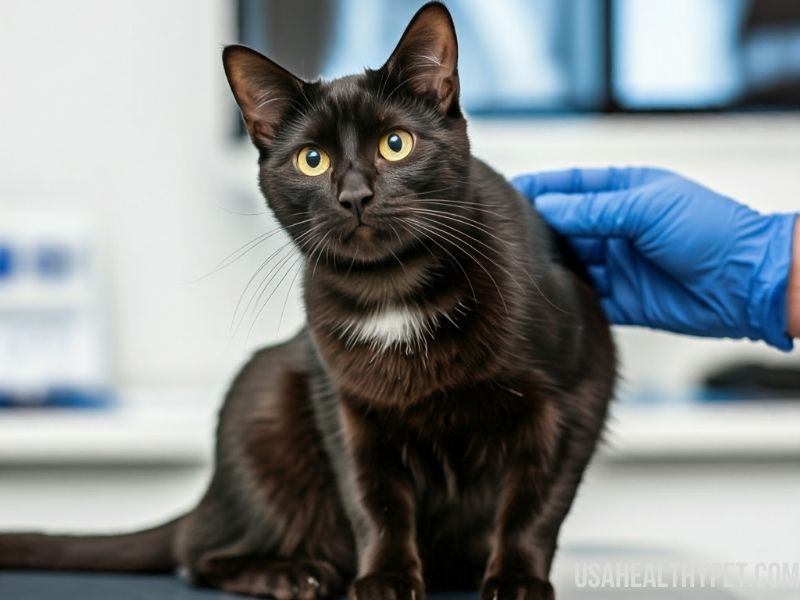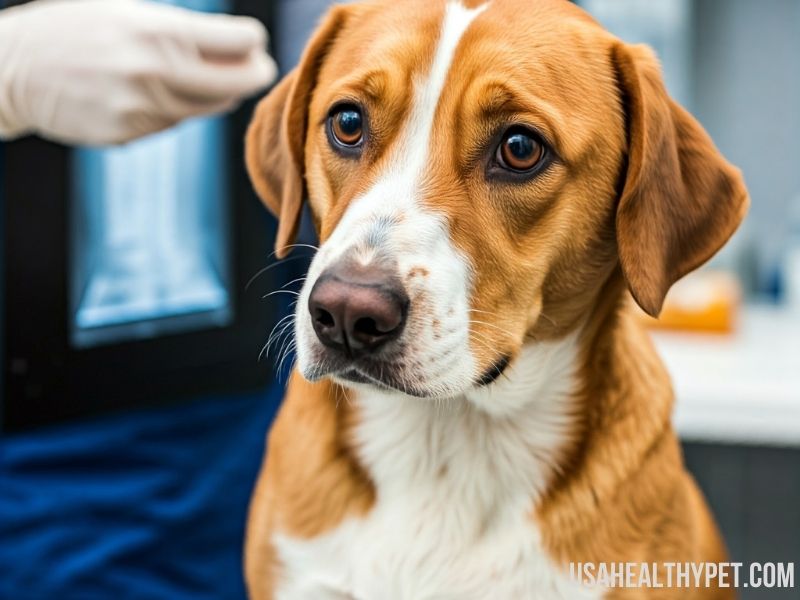X-rays can help pet owners figure out what’s going on inside their pet’s body. From discovering broken bones to identifying swallowed objects, X-rays offer crucial information that can guide veterinarians to the best treatment plans.
However, X-rays can be costly, so it’s only natural to wonder if your pet insurance will help with the bill.
Key Points
- X-rays are crucial diagnostic tools in veterinary care, used to identify injuries, swallowed objects, and illnesses in pets.
- Most pet insurance plans cover X-rays, especially when related to accidents or illnesses. Routine or preventive X-rays may not be covered.
- Coverage can vary by policy type, with accident-only, accident and illness, and wellness plans offering different levels of X-ray coverage.
- Deductibles, co-pays, and reimbursement rates impact how much you’ll end up paying for an X-ray, even with insurance.
- It’s essential to check your policy’s fine print to know exactly what X-rays and diagnostics are covered, especially for breeds prone to specific conditions.
- Contacting your insurance provider before an X-ray can help clarify coverage and prevent surprises in case of claims.
What is Pet Insurance? A Brief Overview
Pet insurance is a policy designed to help you manage unexpected vet bills. It typically works by reimbursing a percentage of the cost after you’ve paid upfront for veterinary services.
Depending on the plan, coverage can range from routine check-ups to major surgeries. Policies vary widely, so reading the fine print is key to understanding what’s covered and what isn’t.
Does Pet Insurance Generally Cover X-Rays?
The good news? Most pet insurance plans cover X-rays as part of diagnostic testing. This means if your pet needs an X-ray to diagnose an illness or injury, insurance is likely to pitch in.
However, there are nuances. Coverage often depends on the type of plan you have, the reason for the X-ray, and whether any pre-existing conditions are involved.

Types of X-Rays Covered by Pet Insurance
Let’s break down the main types of X-rays and examine how they might be covered:
Diagnostic X-Rays
Diagnostic X-rays are usually covered by pet insurance if they’re needed to diagnose a new condition, like a broken leg or potential obstruction.
Since these X-rays are directly tied to an illness or injury, most policies will help cover the costs, especially if you have accident or illness coverage.
Routine X-Rays
Routine X-rays, on the other hand, can be a bit trickier. Some insurance companies consider these “optional” and might only cover them if they’re tied to a specific issue.
For example, routine dental X-rays are sometimes excluded unless they’re part of a larger health problem.
Emergency X-Rays
If your pet has an emergency, like ingesting a foreign object, X-rays are often critical for diagnosis. Most pet insurance plans will cover these as part of emergency care under accident coverage.
Emergency X-rays are rarely excluded, but it’s wise to confirm with your insurance provider in advance.
When Does Pet Insurance Not Cover X-Rays?
Pet insurance isn’t always a silver bullet. There are times when X-rays may not be covered, including:
- Pre-Existing Conditions: If your pet has a history of a certain condition, any X-rays related to that condition might not be covered.
- Preventative or Routine Care Plans: Some policies don’t cover routine X-rays unless they’re deemed necessary by a vet.
- Breed-Specific Exclusions: Some breeds are prone to certain health issues, and insurers may deny coverage for X-rays if the problem is common for your pet’s breed.
It’s crucial to check your policy’s terms and conditions to avoid surprises when it comes to exclusions.
How Different Policies Affect X-Ray Coverage
Not all pet insurance policies are created equal. Several types of policies could affect your X-ray coverage:
- Accident-Only Plans: These policies only cover accidents, meaning any illness-related X-rays might not be included.
- Accident and Illness Plans: The most comprehensive option, these plans generally cover X-rays for both accidents and illness-related cases.
- Wellness or Routine Care Plans: These plans typically cover vaccinations, check-ups, and sometimes routine X-rays, but they are often limited in coverage.
Understanding your plan type can give you a clearer idea of what to expect when you need X-ray coverage.

Stephanie Holt, a pet insurance specialist, shares that “while most insurance providers cover X-rays for injuries and illnesses, it’s crucial for pet owners to read the details on preventative care or wellness add-ons. Some insurers provide limited coverage for routine X-rays, but these may require a specific add-on or wellness plan.” Holt also advises pet owners to “choose a plan that covers both accidents and illnesses, as this will provide the most comprehensive support when it comes to diagnostic needs, including X-rays.”
Deductibles, Co-Pays, and Reimbursement Rates
When considering X-ray coverage, it’s also important to factor in the deductible, co-pay, and reimbursement rate of your policy. Let’s break these down:
- Deductibles: The amount you need to pay out of pocket before the insurance kicks in. Plans with lower deductibles might cover a higher portion of the X-ray cost.
- Co-Pays: The percentage you pay even after meeting your deductible. If your policy has a high co-pay, you’ll still be responsible for a significant portion of the X-ray expense.
- Reimbursement Rates: This is the percentage your insurance will reimburse you after paying the bill. High reimbursement rates mean you’ll receive more back, but it often comes with a higher premium.
Factors That Influence the Cost of Pet X-Rays
The cost of an X-ray can vary significantly, depending on factors like:
- Type of X-Ray: Dental X-rays might cost less than chest or abdominal X-rays.
- Size of Pet: Larger pets sometimes require larger equipment and higher doses of radiation, potentially increasing the cost.
- Location: Veterinary costs can be higher in urban areas, which can affect the price of X-rays as well.
Knowing these variables can help you estimate how much you might spend even with insurance.
Steps to Take if Your Pet Needs an X-Ray
If your vet recommends an X-ray, it’s natural to feel a little overwhelmed. Here’s a quick roadmap to follow:
- Contact Your Insurance Provider: Call your insurer to confirm X-ray coverage for your pet’s specific condition.
- Get an Estimate: Ask your vet for a cost estimate before the procedure.
- Check for Pre-Authorization Requirements: Some insurance plans require prior approval for X-rays, so double-check to avoid issues.
- File Your Claim Promptly: After paying for the X-ray, submit your claim as soon as possible to get reimbursed faster.
Following these steps can ensure that the process goes smoothly and that you’re fully reimbursed if eligible.

Additional Diagnostic Tools and Insurance Coverage
Besides X-rays, pets sometimes need other diagnostic tools like ultrasounds, MRIs, or blood tests. Fortunately, most comprehensive pet insurance plans will cover these tests, though it’s wise to verify each one individually.
In some cases, more advanced diagnostics may have additional requirements or limits.
How to Choose the Right Pet Insurance for Your Needs
When it comes to picking a policy that covers X-rays and other diagnostics, keep these tips in mind:
- Look for Accident and Illness Coverage: This ensures broader coverage, including emergency X-rays and diagnostic tools.
- Review Exclusions and Fine Print: Some policies have hidden exclusions, so always check the details.
- Compare Reimbursement Rates and Deductibles: Balance the cost of your premium with how much you’ll pay out of pocket.
Finding the right insurance can take a little research, but it’s worth it for the peace of mind and the potential savings on high medical bills.
Frequently Asked Questions (FAQs)
1. Are pet X-rays covered for routine check-ups?
Typically, routine check-up X-rays aren’t covered unless they’re related to an identified issue or illness.
2. Do I need to pay upfront for my pet’s X-ray?
Yes, in most cases, you’ll pay upfront and then file a claim with your insurance to get reimbursed.
3. Can I add X-ray coverage later if my pet insurance doesn’t cover it now?
This depends on your insurance provider, but many allow upgrades, though it may result in a higher premium.
4. Are dental X-rays included in pet insurance coverage?
Dental X-rays may be included in some plans if they’re tied to a specific dental issue or if you have a routine care add-on.
5. How quickly do pet insurance providers reimburse X-ray costs?
Reimbursement times vary, but most providers aim to process claims within two weeks.

Pingback: Does Pet Insurance Cover ACL Injuries? Complete Guide
Pingback: Does Pet Insurance Cover Cremation Costs? Complete Guide
Pingback: Does Pet Insurance Cover Kidney Transplants? Essential Guide
Pingback: Does Pet Insurance Cover Cyst Removal?
Pingback: Why is My Female Dog Suddenly Peeing in the House?
Pingback: Should You Be Concerned If your dog has Yellow Eyes?